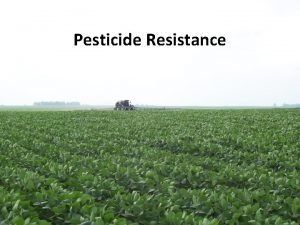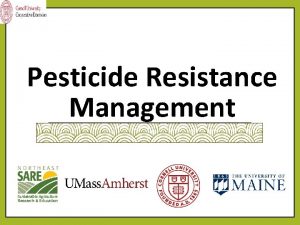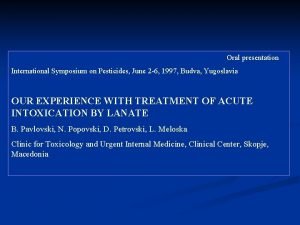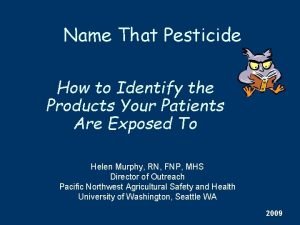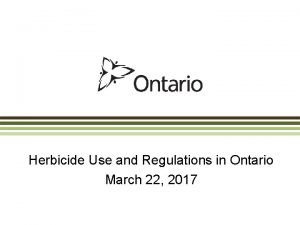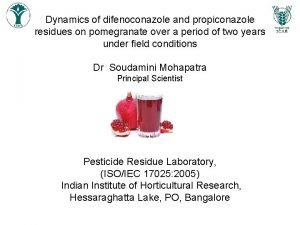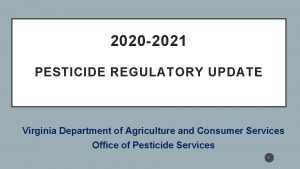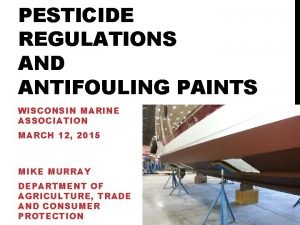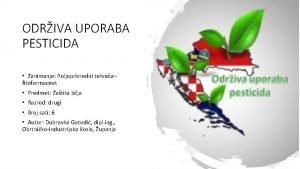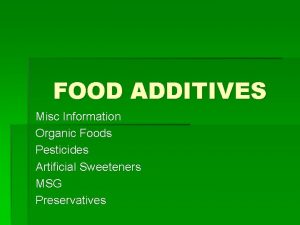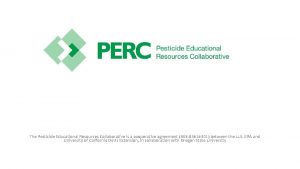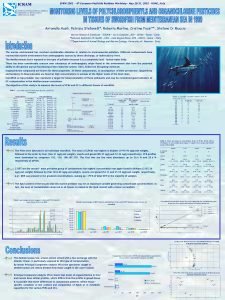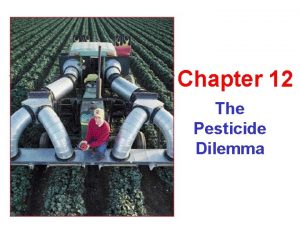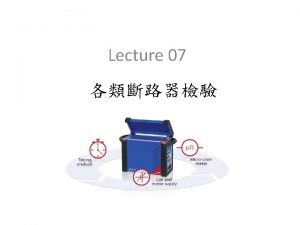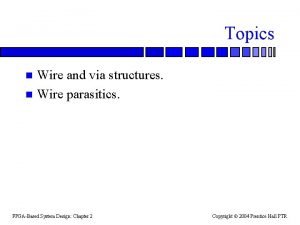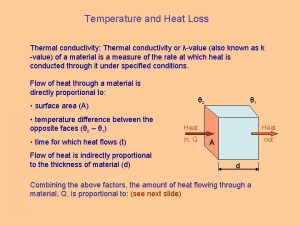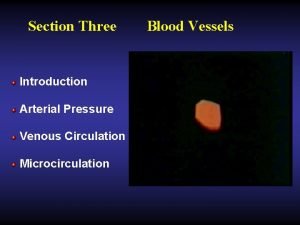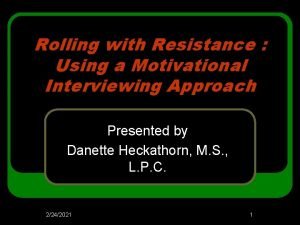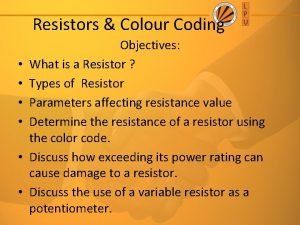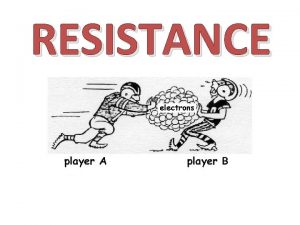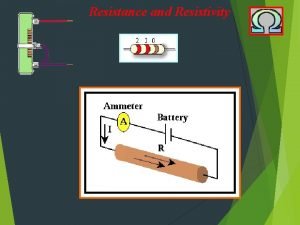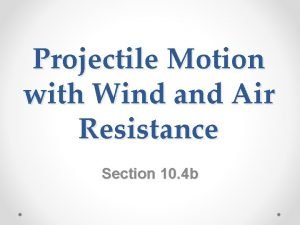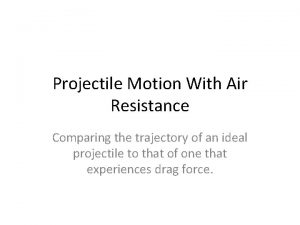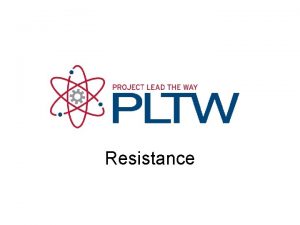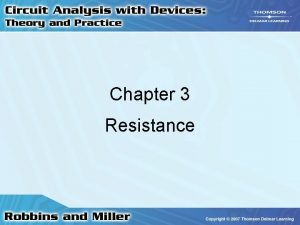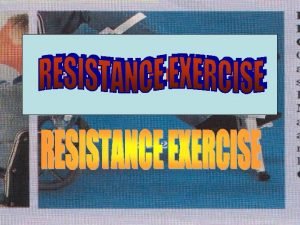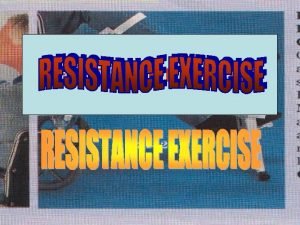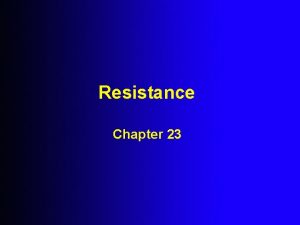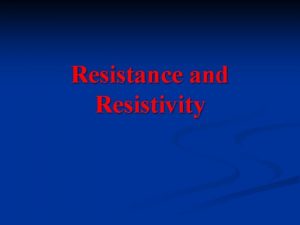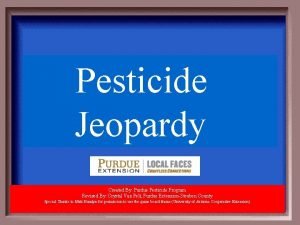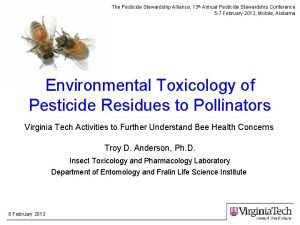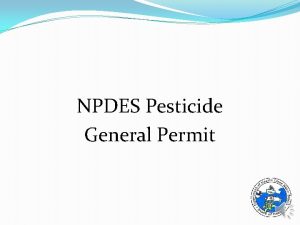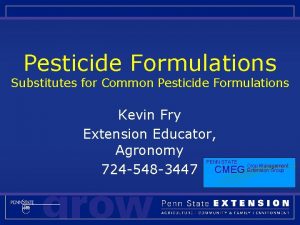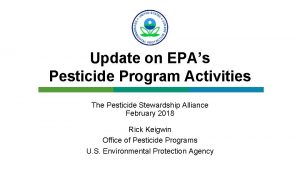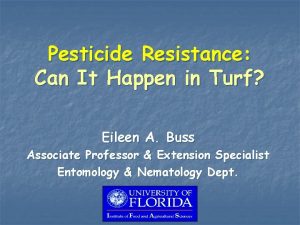Pesticide Resistance Management What is Pesticide Resistance An



































- Slides: 35

Pesticide Resistance Management

What is Pesticide Resistance? An inheritable characteristic of a pest that makes it less sensitive to a pesticide Renders the pest able to survive exposure to that pesticide that would normally kill those without the genes • Occurs in all pests - weeds, insects, fungi, etc. • Reflected by failure of a product to achieve expected level of control •

What is Pesticide Resistance? o A mutation makes a pest less sensitive to a pesticide, can naturally occur in pest population before pesticide use o Pesticide use kills susceptible individuals (those without the mutation/gene), and “selects” those with the mutation to survive o Pests with the mutation live, reproduce, and pass on the genes, which made them less sensitive to the pesticide, to their offspring o The pest population has increasing numbers of resistant individuals

What is tolerance? Tolerance - natural ability of a species or individual member of a species to survive and reproduce after a pesticide treatment. • This implies no selection or genetic manipulation to make the organism this way. • Tolerance is a natural tendency and is not a result of selection pressure. Example: Mature caterpillars are more tolerant to many insecticides than younger ones of the same species due to differences in body size, exoskeleton thickness, and the ability to metabolize a poison. These differences are identified as tolerance or natural resistance rather than true insecticide resistance.

Why do pests become resistant? • Pre-adaptation • High fertility • Short generation time Intrinsic properties of pest species. Can’t be controlled. • Selection pressure Under human control!

Natural pest population • Some individuals have genes that make them less sensitive to a pesticide

Pesticide application • Individuals that are susceptible die XXXXXXXXXX XXXXXXXXX XXXXXXXXX

Pesticide application • Individuals with naturally occurring genes that make them less sensitive to a pesticide survive…

After pesticide application • Humans have applied selection pressure. • Individuals with genes that make them less sensitive to a pesticide reproduce. • The offspring have the genes that make them less sensitive to the pesticide. • The new population is more resistant than a natural population

• Eventually, the population is mostly made up of resistant individuals. • Under permanent selection pressure, resistant insects outnumber susceptible ones and the insecticide is no longer effective.

After glyphosate application in a soybean field Glyphosate-resistant horseweed Glyphosate-susceptible horseweed

Why is Managing Resistance Important? Pesticide resistance is increasing • Currently: o 520 insect and mite species • • At least 17 insect species are resistant to all major classes of insecticides o 273 weed species o 150 plant diseases o 10 rodent species


Why is Managing Resistance Important? We want pesticides to provide effective control of pests • It’s hard to develop new products for pest control o If we exhaust current technology, it might be a long time until something is developed to replace it! • • Environmental stewardship o Pest are mobile, resistance that develops in one crop can spread o Minimize ineffective use? ? of pesticides

All types of pesticides are at risk for resistance! Herbicides Herbicide Resistance Action Committee (HRAC) http: //www. hracglobal. com Fungicides Fungicide Resistance Action Committee (FRAC) http: //www. frac. info Insecticides Insecticide Resistance Action Committee (IRAC) http: //www. irac-online. org International groups founded by the agrochemical industry for a cooperative approach to resistance management. Sources for info and education materials.

What Products are Resistant Prone? All pesticides have some risk, BUT not to the same extent • Those with single-site mode of action, targeted and narrow-spectrum more at risk •

High Risk Repeated applications of the same insecticide Alternating applications of different insecticides Regular calendar- Continuous based spraying crop Spraying based on an economic threshold Annual crop rotation Low Risk Treating whole field Spot and perimeter treatment

Mode of action (Mo. A) • The chemical structure of a pesticide generally defines its target site and its mode of action at that target site. o Target site - the physical location within an organism where the pesticide acts o Mode of action - the action of a pesticide at its target site. The way in which it causes physiological disruption at the target site. • Each pesticide has a Group Number to help growers make resistance management decisions • Group number is clearly marked on all labels

Insecticides - IRAC codes Based on site of action



Fungicides - FRAC codes Based on cross resistance behavior

Herbicides - HRAC and WSSA groups HRAC and WSSA (Weed Science Society of America) codes, differ slightly but very similar Systems based on site of action

Other terminology Cross-resistance - resistance to two or more pesticides resulting from a single resistance mechanism. Can occur even where the pest has not been exposed to all products it is resistant to. e. g. An insect resistant to parathion (an organophosphate) also has reduced susceptibility to other organophosphates. X X X X X

Other terminology Multiple resistance - resistance to several pesticides from two or more distinct resistance mechanisms in the same organism. e. g. Palmer amaranth is resistant to atrazine (a triazine herbicide), and also mesotrione (an HPPD inhibitor herbicide).

Other terminology Quantitative Resistance Either the pesticide works…. or it does not. • Complete loss of control. • Qualitative Resistance Pest exhibits range in sensitivity. • Gradual loss of control. • Can be regained with higher rate or more active pesticide. •

Key Points About Managing Resistance Goal is delaying development of resistance, not managing resistant pest biotypes once detected • Use Integrated Pest Management (IPM) program • Minimize use of at-risk products •

ü Do not rely on pesticides alone Integrate different controls! • synthetic pesticides • biological pesticides • beneficial insects (predators/parasites) • cultural practices • transgenic plants (where allowed) • crop rotation • pest-resistant crop varieties • chemical attractants or deterrents

Alternate, rotate, or sequence different pesticide Mo. A classes Use FRAC, IRAC, and HRAC when choosing chemicals! • Do not rely on product names • Do not rely on active ingredients • Many different products and active ingredients can be in the same group! Alternaria leaf spot – Cantaloupe Fungicide FRAC Code Cabrio (pyraclostrobin) 11 Pristine (pyraclostrobin + boscalid) 7 + 11 Quadris (azoxystrobin) 11 Quadris Top (azoxystrobin + difenoconazol 3 + 11 Reason (fenamidone) 11

Resistance management guidelines on label MUST be followed.

Applications must be timed correctly • Target the most vulnerable life stage of the pest • Use spray rates and application intervals recommended by the manufacturer and in compliance with local agricultural extension regulations. o A high rate can take out pests that might be somewhat resistant, but using too low a rate may allow them to survive

Challenges to Managing Resistance • Do not have adequate tools o Not enough registered products to permit rotation • The program may not be as effective • The program may be more expensive • Products with resistance risk for one pest are also used for others

Preserve susceptible genes Preserve susceptible individuals within the target population by providing a refuge or haven for susceptible insects • Unsprayed areas within treated fields • Adjacent refuge fields These susceptible individuals may out-compete and interbreed with resistant individuals, diluting the impact of any resistance that may have developed in the population.

Do genetically engineered crops (GMOs) contribute to resistance development? Not directly! Growers may manage those crops differently, encourage resistance development inadvertently • Example: “Round. Up” ready crops, over reliance on single herbicide

Supporting funds were provided by NE-SARE Professional Development Program Grant, ENE 15 -140 -29994 Presentation developed by K. Ghantous, H. Sandler, and L. Mc. Dermott. With special thanks to: • Dr. Margaret Mc. Grath, Cornell University • Dr. Andrei Alyokhin, University of Maine • Dr. Richard Bonanno, University of Massachusetts for their expertise and contribution of materials for presentation
 Define pesticide resistance
Define pesticide resistance Xxxxxxxxxx xxxxxxxxx
Xxxxxxxxxx xxxxxxxxx Cartridge filter design calculation
Cartridge filter design calculation Ignoring friction air resistance and electrical resistance
Ignoring friction air resistance and electrical resistance Lanate pesticide
Lanate pesticide Pesticide classification chart
Pesticide classification chart Pesticide warning signs ontario
Pesticide warning signs ontario Agriculture pesticide difenoconazole
Agriculture pesticide difenoconazole Virginia pesticide registration
Virginia pesticide registration Wisconsin pesticide applicator license
Wisconsin pesticide applicator license Tablica miješanja pesticida
Tablica miješanja pesticida Organic food additives
Organic food additives Pesticide educational resources collaborative
Pesticide educational resources collaborative European pesticide residue workshop
European pesticide residue workshop Types of pesticides
Types of pesticides Pyramid levels of management
Pyramid levels of management Top management middle management first line management
Top management middle management first line management Top management and middle management
Top management and middle management Insulation resistance of transformer
Insulation resistance of transformer Multiplier resistance
Multiplier resistance Ohm's law states that
Ohm's law states that Advantages of vacuum circuit breaker
Advantages of vacuum circuit breaker Skin effect resistance
Skin effect resistance Heat loss symbol
Heat loss symbol Air resistance surface area
Air resistance surface area Résistance du béton à 7 jours
Résistance du béton à 7 jours Facts about parallel circuits
Facts about parallel circuits Blood circulation
Blood circulation Roll with resistance example
Roll with resistance example What is resistance
What is resistance What is electrical resistance
What is electrical resistance Dimensional formula of electric resistance
Dimensional formula of electric resistance Resistivity units
Resistivity units Air resistance formula
Air resistance formula Trajectory with air resistance
Trajectory with air resistance Projectile motion
Projectile motion
